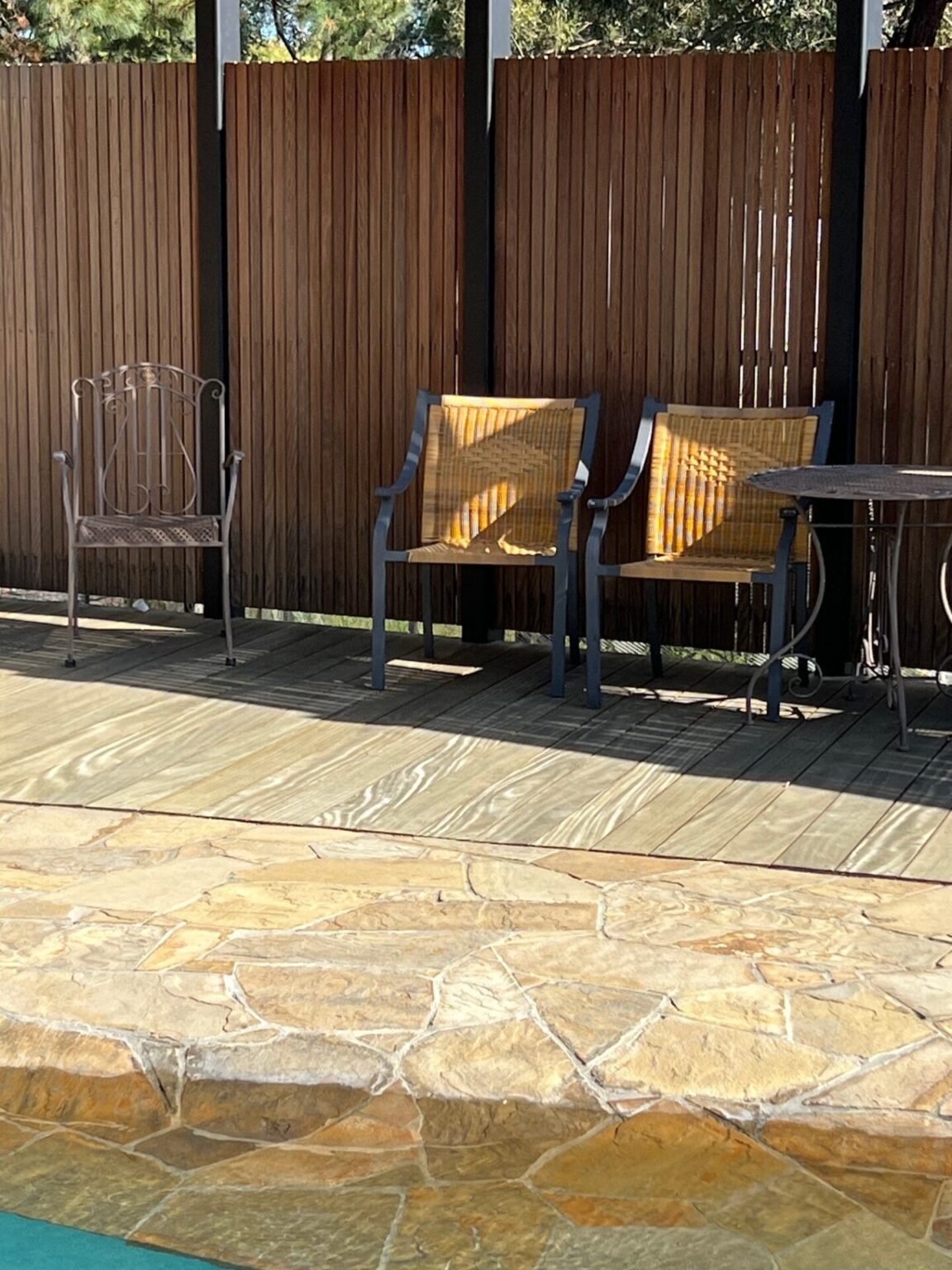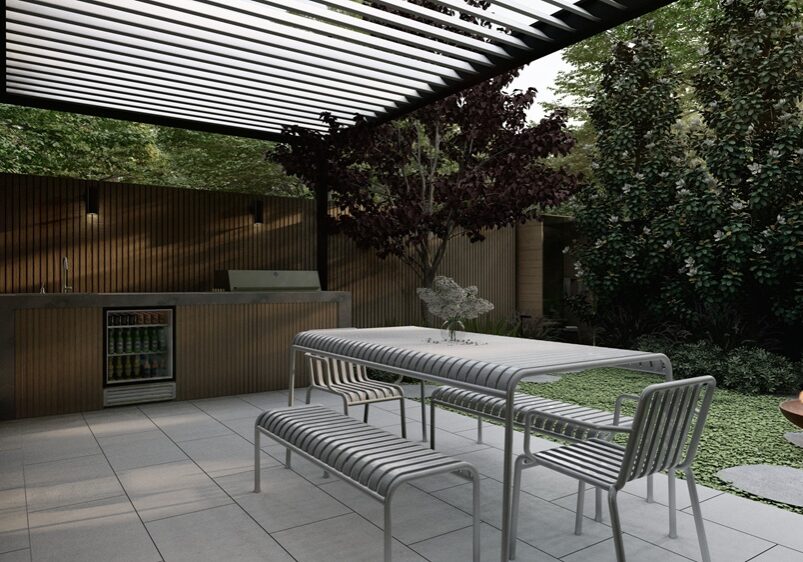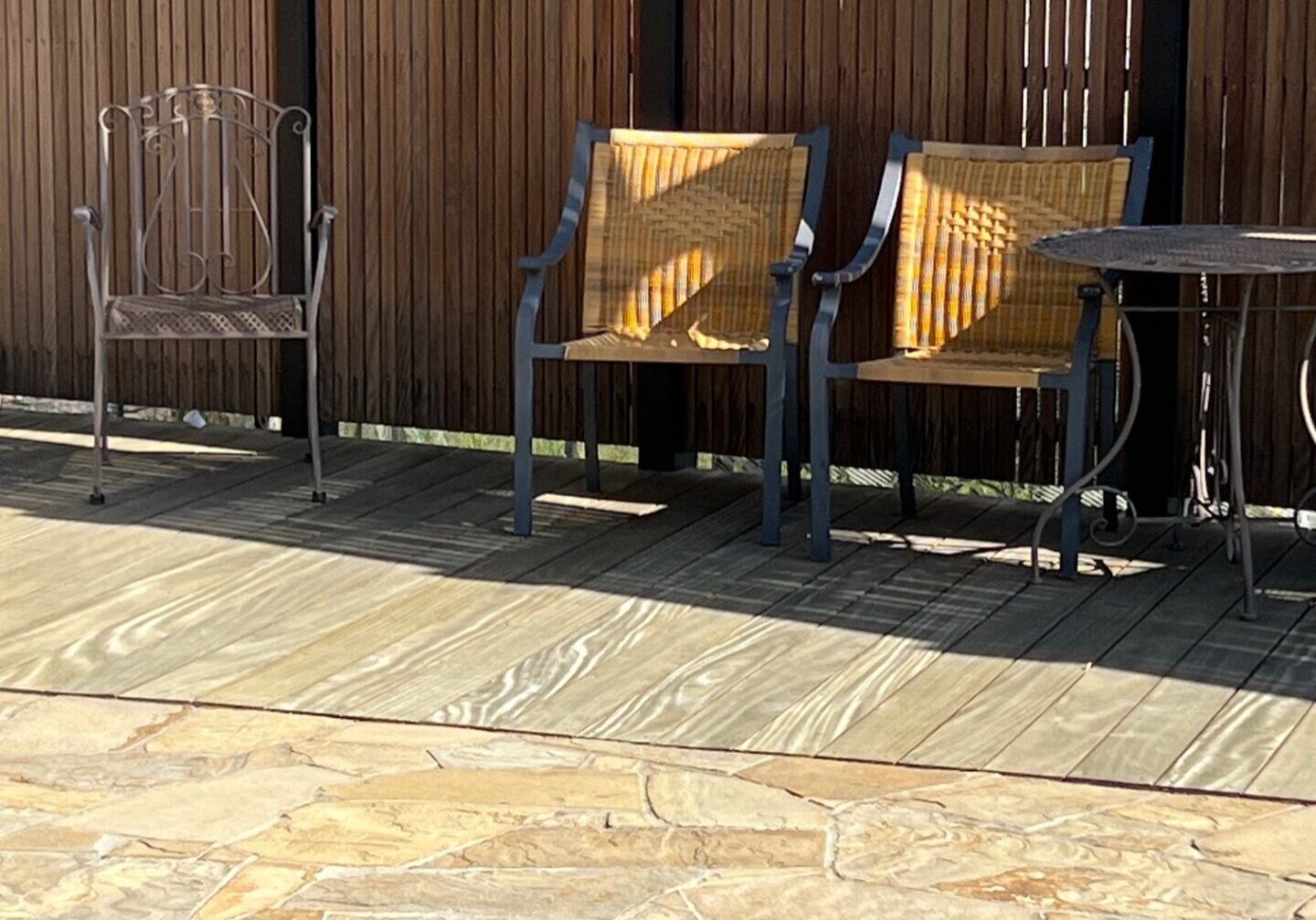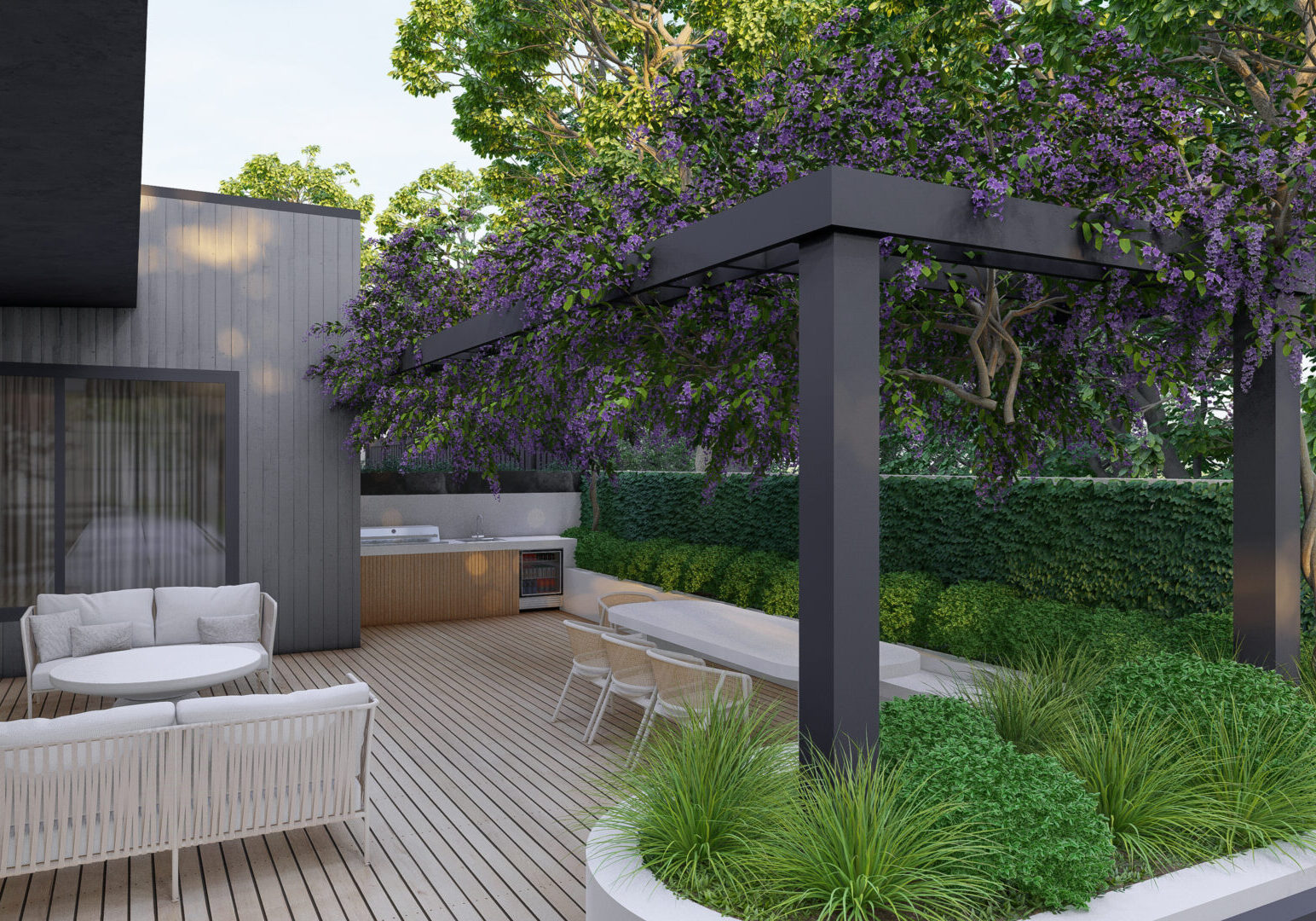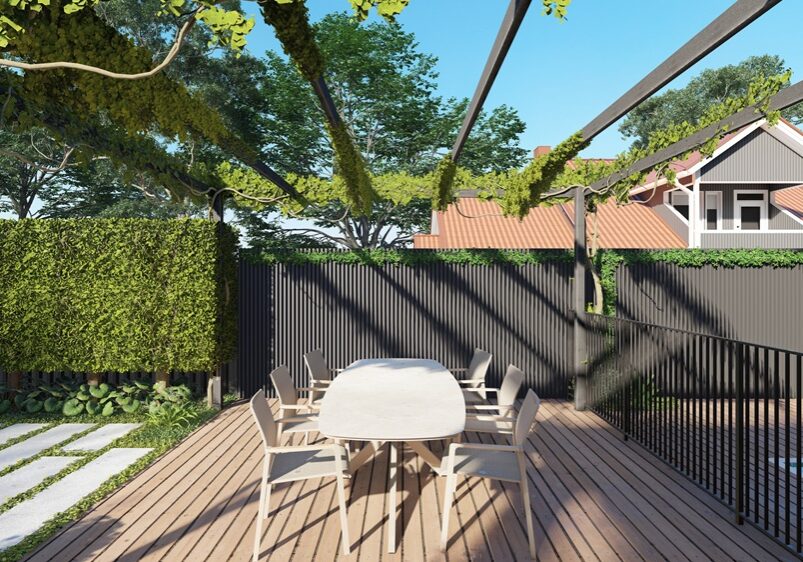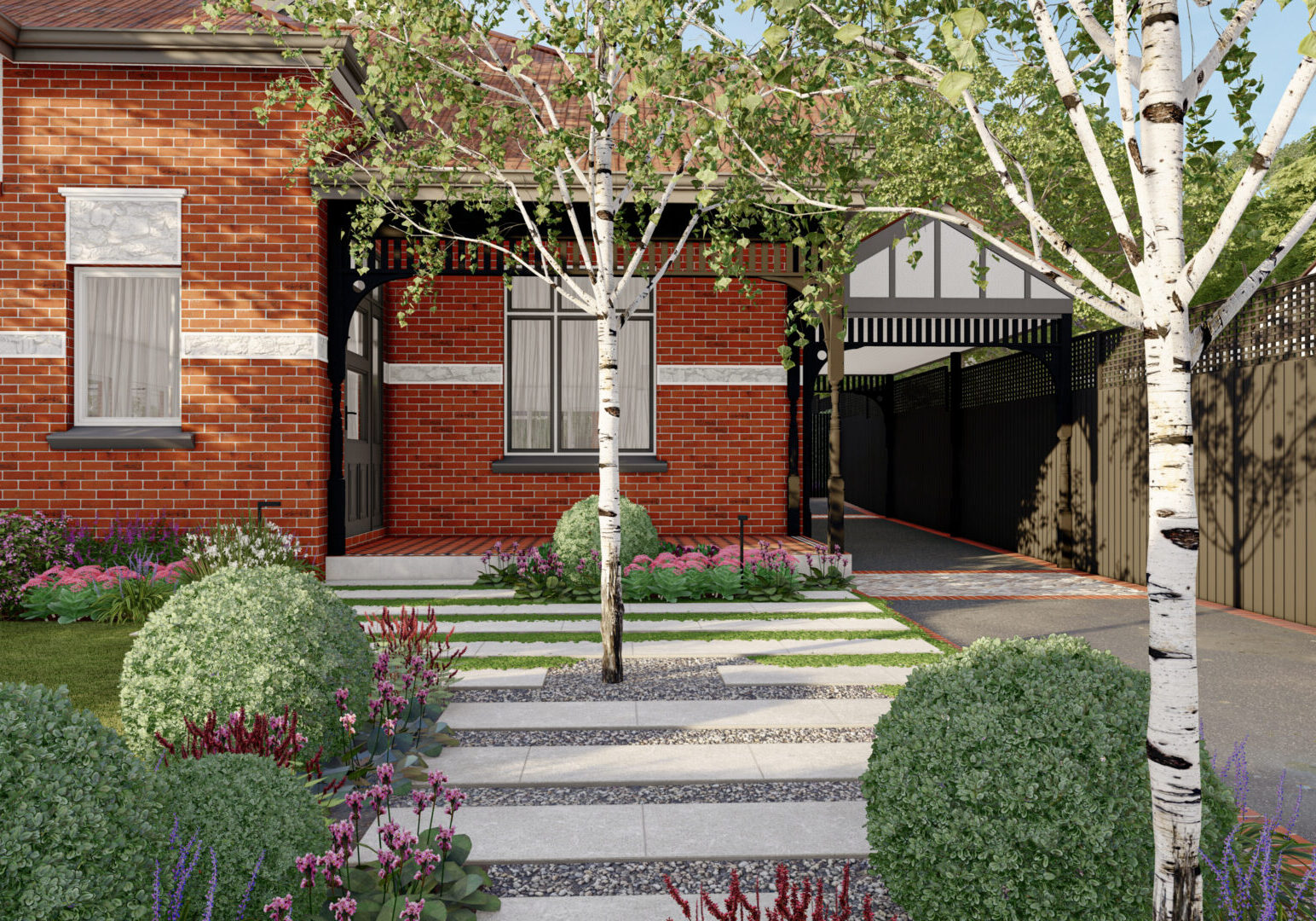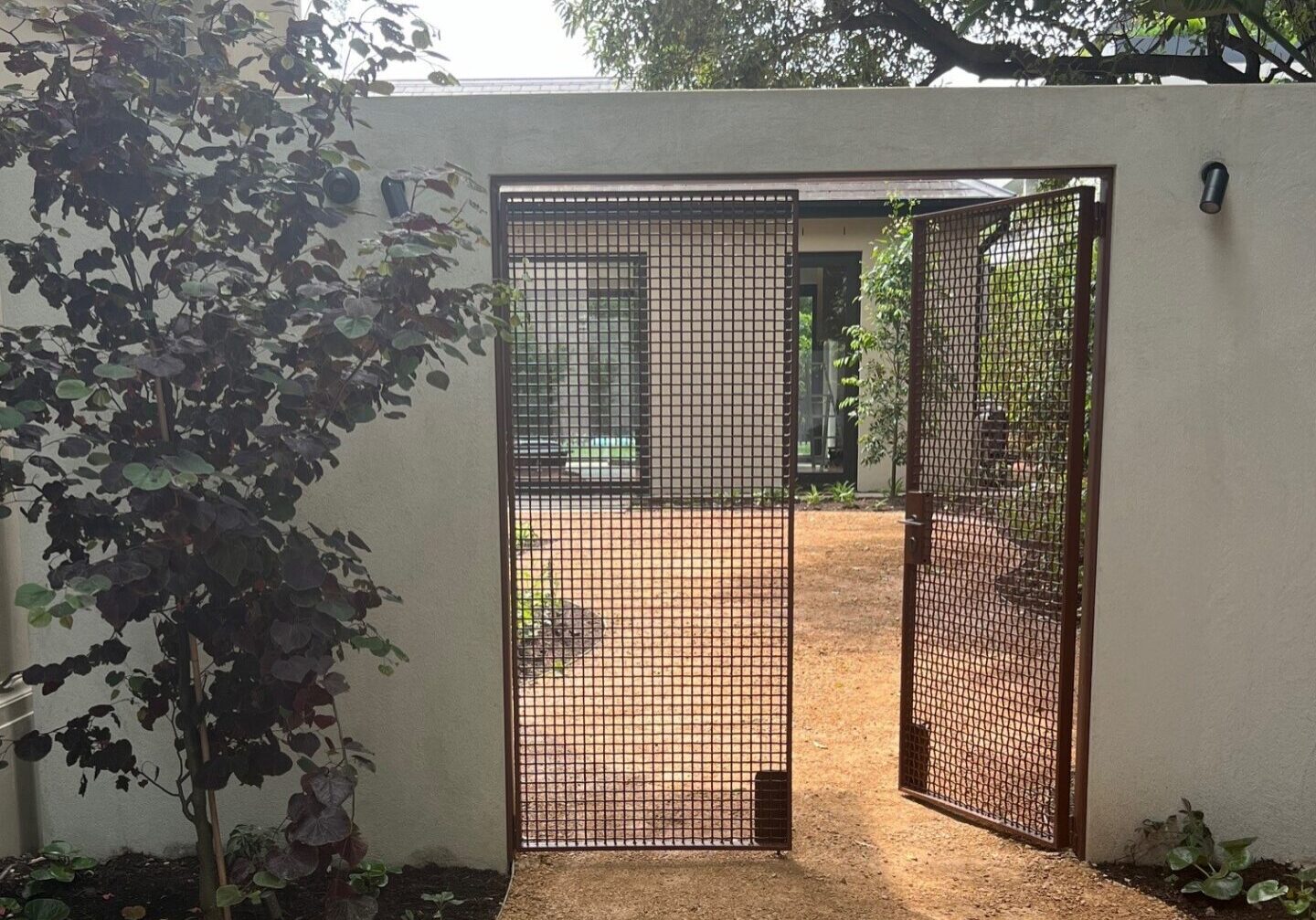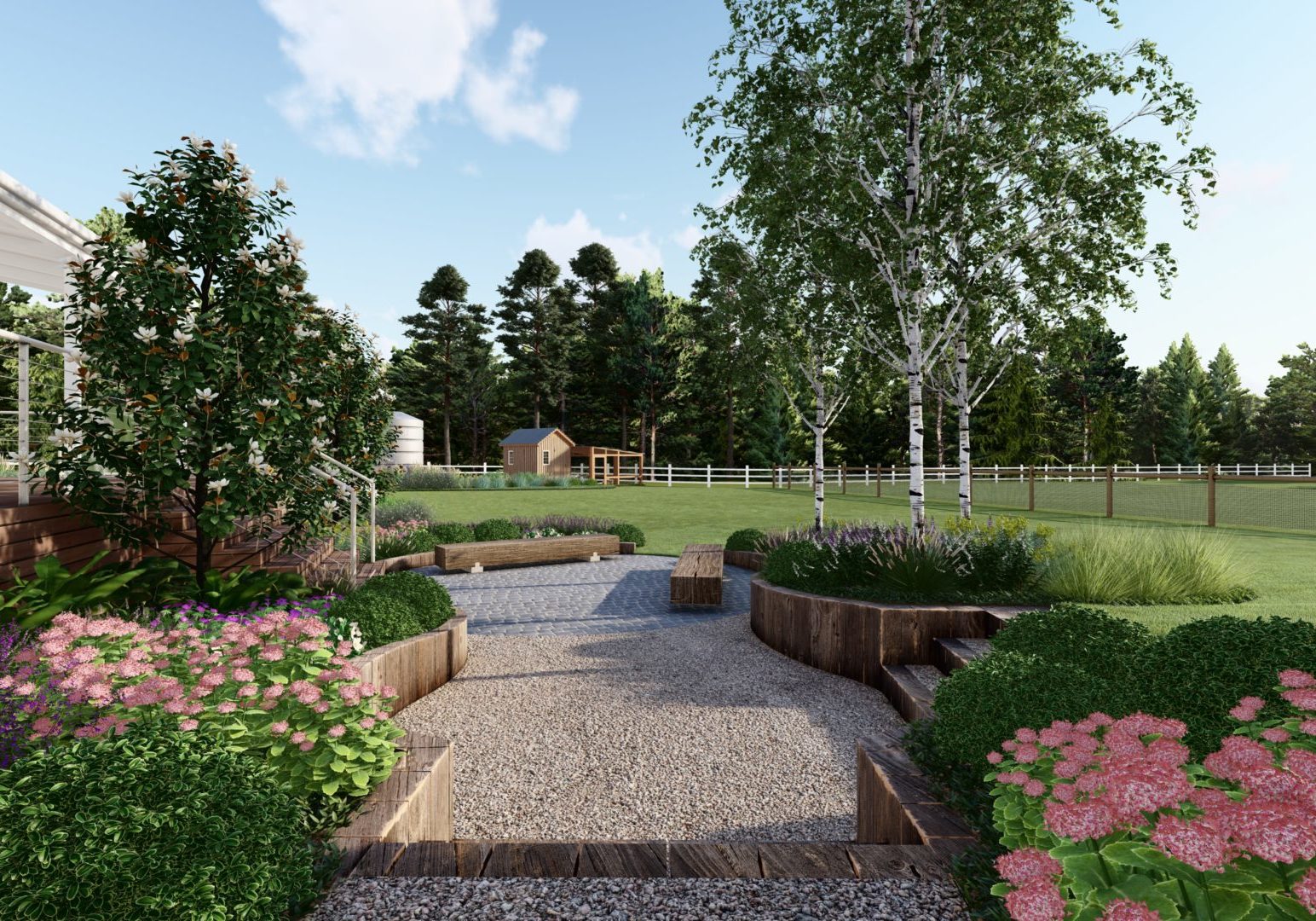Why Paving is Important in Landscape Design October 2, 2025
Paving is one of the most important elements in any garden or outdoor space. It is not only functional but also sets the overall tone of the design. The right paving can transform a backyard, create flow, and bring style and character to the home. From pathways to patios, paving gives structure and provides an opportunity to introduce creativity through different patterns and materials.
In this blog we will explore why paving matters, the most popular paving patterns, the best paving materials, and how combining them creates interest that stimulates the senses and makes a garden more inviting.
Why Paving Matters in Garden Design
Paving plays a dual role. Practically, it provides durable and stable surfaces for walking, entertaining, and outdoor living. It ensures the garden is usable all year round and makes it easier to move between different zones of the space.
From a design perspective, paving is one of the strongest tools in landscape design. It frames garden beds, directs movement, highlights focal points, and creates visual rhythm. The right paving makes a garden feel finished, connected, and intentional. Without it, an outdoor space can appear incomplete or lacking structure.
Popular Paving Patterns for Outdoor Spaces
One of the reasons paving is so versatile is the wide range of patterns available. Each pattern influences how the garden feels and how people interact with it.
-
Stretcher bond paving – This simple linear layout creates clean lines and a calm, contemporary feel. It is perfect for modern gardens.
-
Herringbone paving – With its zig zag layout, herringbone brings energy and strength. It is especially good for driveways and pathways as it handles weight and movement very well.
-
Basket weave paving – A traditional choice that creates timeless charm, perfect for cottage gardens or classic spaces.
-
Large format paving – Oversized stone or concrete slabs laid in grids give a spacious and minimalist look that suits modern outdoor living.
Patterns not only provide durability but also stimulate interest. They guide the eye, create texture, and add character, which makes the garden more engaging.
Best Paving Materials to Use in the Garden
Choosing the right paving material is just as important as the pattern. Different materials create very different moods and levels of sophistication.
-
Natural stone paving – Sandstone, bluestone, and granite bring natural beauty, rich textures, and longevity. They can be cut into neat shapes for a formal look or used irregularly for a more relaxed style.
-
Concrete pavers – Highly versatile and available in many finishes and colors. Concrete is a cost effective option that can mimic natural stone or achieve sleek, modern effects.
-
Brick paving – A timeless choice with earthy tones and excellent durability. Brick looks stunning in herringbone or basket weave patterns and pairs beautifully with greenery.
-
Gravel paving – Ideal for informal gardens, gravel adds a rustic and relaxed feel. It is permeable, helping with drainage, and can be combined with stepping stones for interest.
-
Timber decking with paving – Mixing timber with stone or concrete creates variation in texture and adds warmth to an outdoor space.
Each material has its own strengths, and combining them often produces the most striking results.
Combining Materials for Outdoor Paving Interest
The most memorable landscapes often mix paving materials in thoughtful ways. A stone patio with a brick border adds detail and craftsmanship. Large concrete pavers placed in gravel create contrast between solid and loose surfaces. Timber decking that flows into stone paving provides a smooth transition from one zone to another.
These combinations stimulate the senses. The change in texture underfoot and the shift in visual tone keep the garden interesting. By combining materials, you introduce layers of character that prevent the design from feeling flat or predictable.
Why Creating Interest is Stimulating
Interest is a crucial factor in landscape design. A garden without variation can feel uninspired, while one with subtle changes in paving, texture, and tone feels alive. Stimulating spaces encourage exploration, interaction, and relaxation.
When paving is carefully planned, it provides structure but also sparks curiosity. It makes the garden not only functional but also engaging and memorable. The play of patterns, colors, and materials creates harmony and contrast that elevate the entire design.
Outdoor Paving Ideas to Transform Your Garden
If you are planning a new landscape or looking to refresh your outdoor space, start with paving. Here are some ideas:
-
Use large stone pavers to create a modern entertaining area.
-
Introduce a herringbone brick pathway to add classic charm.
-
Mix gravel with stepping stones for a relaxed and natural look.
-
Combine timber decking with concrete pavers for a layered effect.
-
Highlight focal points such as a firepit or pool with contrasting paving patterns.
Final Thoughts
Paving is more than just a surface underfoot. It defines areas, provides durability, and creates beauty in the garden. By choosing the right paving materials and experimenting with patterns, you can design a space that is practical, stylish, and stimulating. Interest is what makes a garden truly memorable, and paving is one of the best ways to achieve it.
Whether you prefer the sophistication of natural stone, the timeless appeal of brick, or the modern look of large format pavers, the right paving will transform your outdoor space into a cohesive and inviting landscape.
